At the turn of the 20th century, a new music emanating from African-American urban communities began creeping into mainstream culture for the first of what eventually became many times over the course of the century. But in 1975, E.L. Doctorow used this musical form as a metaphor for not only the infusion of African-American influences into the white musical world, but for the changes in emerging racial presences that forced drastic social and class struggle, upheaval, and eventually necessary change. Weaving tales of fictional characters fighting to gain balance in the new century with historical characters that interacted with them, Doctorow gave voice to an epic tale that has resonated long beyond the events he portrayed.
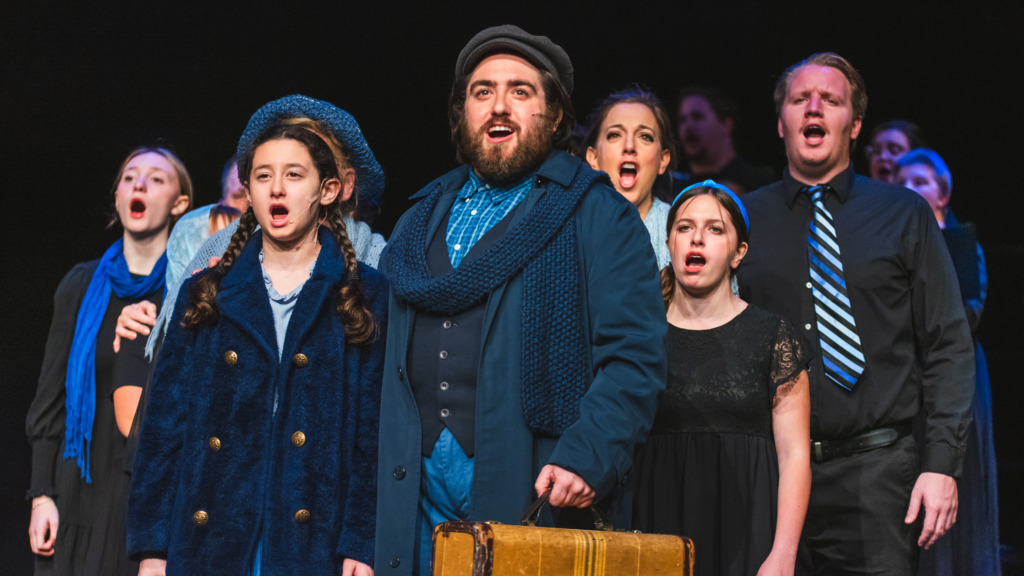
In 1998, Lynn Ahrens & Stephen Flaherty adapted the landmark novel with a book by Terrance McNally and fleshed out that musical metaphor in an acclaimed stage version. The Maryland Theatre Collective, a new theatrical effort which evolved from a merger of the almost 50-year-old veteran Baltimore County group Heritage Players and the emerging Baltimore Theatre Collective (originally the Purple Light Theatre Company) joining forces in an attempt to reach a new audience on a new scale, has chosen this Tony-nominated work as the third entry in an impressive inaugural season, by far their most ambitious outing to date. Complete with a 40-person cast comprised of a virtual who’s who of community theatre from Delaware to the Bay Bridge, backed up by an additional 20+ voice on-stage choir and an unheard-of (by community theatre standards, where costs and space are driving the tendance away from live music and towards performance tracks) 40 seat orchestra to accompany them, this is a celebration of the joys of live music on a community stage.
MTC and director Amy Haynes Rapnicki have chosen to present this behemoth piece in a modified concert setting, and the decision proves wise, allowing the upstart company to focus on their art and not the massive (and costly) sets and props, in particular bulky pianos and the usually prohibitive but requisite Model T Ford automobile that features predominantly in the tale.
Ahrens & Flaherty clearly lay out all the boundary lines about to be crossed in one of the most effective opening numbers in modern musical theater (the upper class whites blatantly pine for a time-gone-recently-by when “there were no negroes and there were no immigrants”), and Haynes Rapnicki and choreographers Rachel Sandler and Tommy Malek (with an assist from costume coordinators Malek and Mica Weiss, who set well-defined color palettes for each ethnic group) visually breathe life into this magnificent number as the three ethnic groups jockey for available stage presence in a symbolic carousel of spatial and vocal one-upmanship.
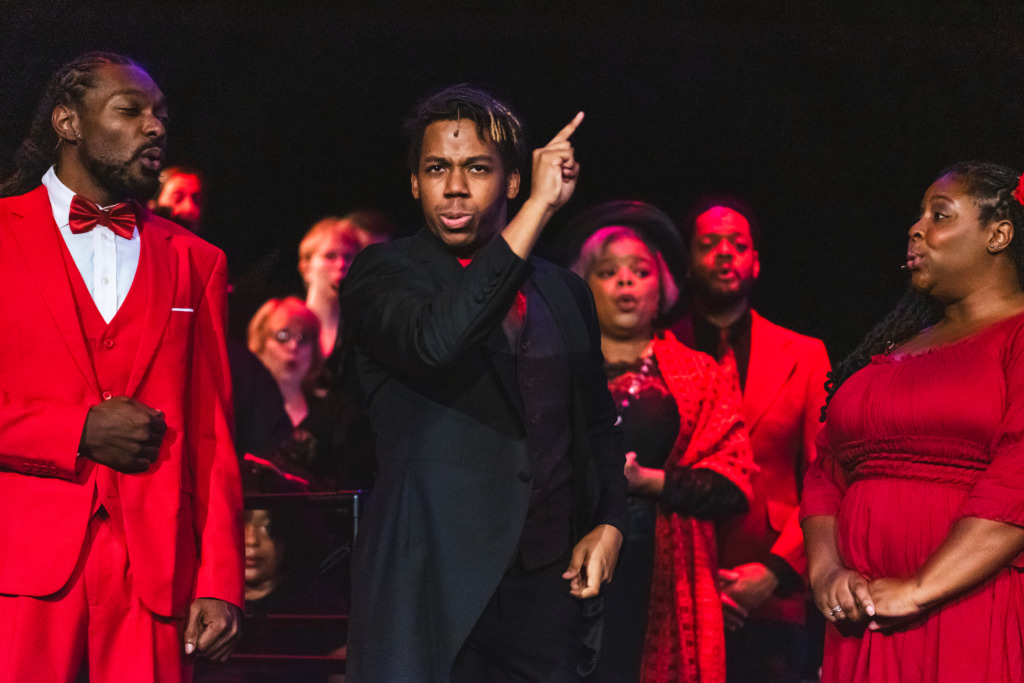
The three clashing social classes are each personified by a central character through whom we witness change and grow via their experiences. Emily MacKay as Mother, a privileged New Rochelle aristocrat who leads a perfectly satisfactory life until her alpha male husband with a passion (i.e., budget) for adventure (Josh Mooney’s Father) embarks on an expedition with Admiral Peary to the North Pole and leaves her to her own intuitions as she juggles a series of unforeseeable events, discovering in the process an independence and self-reliance never available to her. Although “successful” by social standards, Mother slyly represents a third oppressed faction of society at that time—women. MacKay is warm and maternal and experiences the most personal growth of the piece, beautifully displayed in her standout 11:00 anthem “Back to Before”.
As Latvian immigrant Tateh, Tommy Malek engagingly snatches the American Dream he came here to pursue from the jaws of the American Nightmare he discovered upon arrival with his sickly daughter. He gives a poignant view of an unwelcoming new world in the sarcastically-titled “Success”. But Malek is no less engaging in the second act when Tateh becomes the prototypical immigrant who, through determination, talent, and luck, eventually finds economic triumph in a new niche along with a degree of social acceptance (or at least vindication).
But it is Jamar Brown as Coalhouse Walker Jr. who, given the best material (vocally and emotionally) of the piece, makes the biggest impact. With strong, soulful, determined vocals and a powerful presence, he embodies Coalhouse at his most optimistic on the gorgeous power duet “Wheels of a Dream” (with Alana Simone as Sarah), a touching tribute to loss in “Sarah Brown Eyes”, and the nihilistic anger of a dream stolen and destroyed in the powerful finale “Make Them Hear You”.
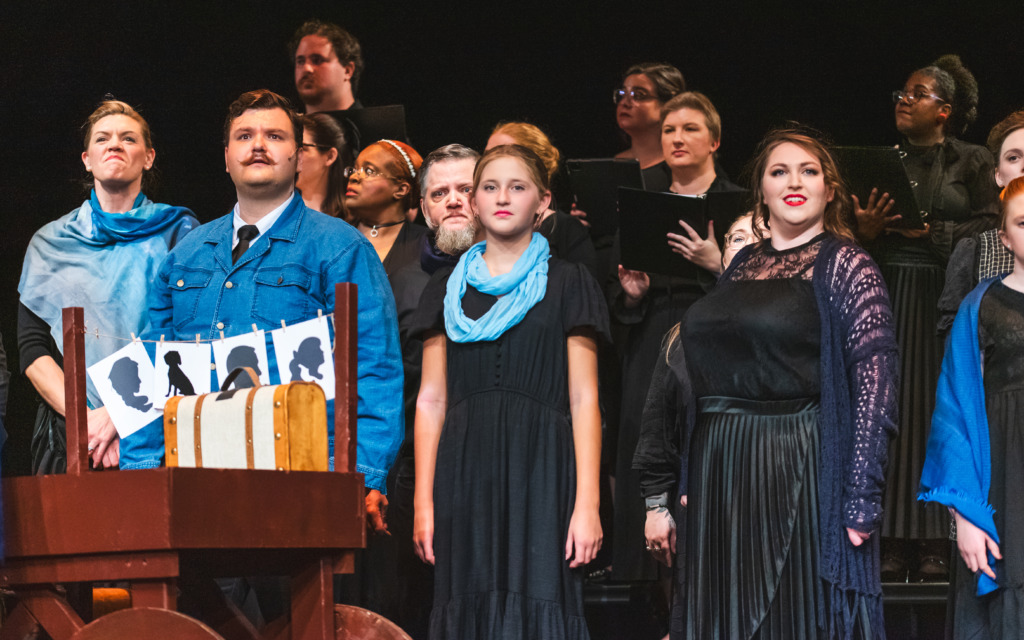
The always dependable Josh Mooney delivers another superior performance in the supporting role as Father. Written as a stand-in for pompous, entitled white men of a generation everywhere, Mooney mines the role for all the confusion, frustration, and sadness within it as a man who returns from being on top of the world (almost literally), a journeyman for no good reason except he can be, and finds his grip on the life he has known loosening as the world around him and his place in it suddenly changes. He no longer has control over his wife, his family, his house, or his world, and Mooney somehow creates a modicum of sympathy for this most unsympathetic character whose fate is sealed by his own entitlement.
Brandon Nicholas Pfeltz as Mother’s Younger Brother embodies the discontent of a new generation as the privileged soul in search of a greater purpose. Pfeltz slowly descends from idealistic young romantic to awakened liberal activist to bitter nihilistic radical after broadening his sheltered suburban experience through a series of interactions with the dazzling Emma Nesbit, anarchist Emma Goldman, and eventually Coalhouse Walker.
Alana Simone as Sarah suffers from the most underwritten role of the show, where we see her entire arc pass in a half an act, yet her presence impacts the show and the story in the most profound ways. Way pared down from the book, the character becomes little more than a plot device, but Simone makes the best of her limited time, allowing us to feel for Sarah, and leaves us with the second half of the powerful “Wheels of a Dream”, harmonizing and blending beautifully with Brown. And that memory lingers on throughout the remainder of the show.
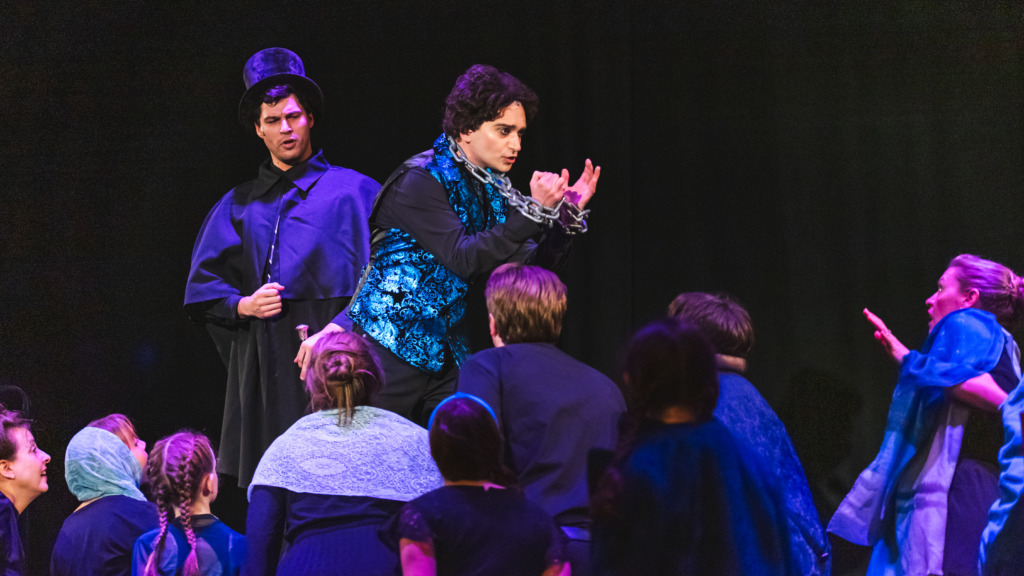
The secondary historical characters that also reinforce each ethnic story are colorfully drawn by the game cast. An engaging Henry Cyr as Harry Houdini offers up an enigmatic portrayal of the quintessential immigrant success story (the escape artist who encourages fellow immigrants to “break the chains” that hold them down) yet becomes a cautionary tale in the second act’s “Atlantic City”, when constantly chasing success risks becoming an unattainable goal as he descends into a questionable final act intent on contacting his beloved deceased mother on the other side.
Bridget Makowski gives refreshing bursts of much-needed levity as Vaudeville (and early tabloid) sensation Evelyn Nesbit who mistakes infamy and beauty for talent. Bubbly and flirty, she is graced with leading the biggest upbeat production number of the show, the frivolously fun “Crime of the Century”—journalistic sensationalism at its finest (as Emma Goldman snarks, “there were 98 years to go!”), reenacting her life events in her Vaudeville act as the notorious “Girl on the Red Velvet Swing” from the headlines. (Kudos to Sandler and Malek for devising a concert interpretation of the number that makes up for the lack of the fly-in swing effect the production calls for.) Like Cyr, Makowski also gets a fun flip showing the downside of her earlier success in “Atlantic City” with a seedier, more desperate last-ditch effort to stay famous beyond her proverbial fifteen minutes.
Alissa Margolis digs deeply into her role as radical anarchist Emma Goldman. Fiery at the soapbox rallies, inspiring to the souls in need of direction, angry at the world that shuns the working class, she delivers a politically charged performance that is Emma Goldman, not a mere musical interpretation of her.
And Tyler White continues to be an evolving revelation to local audiences. With experience on a variety of local, regional, and dinner theater stages, here as Booker T. Washington he stretches himself further with in inspiring, authoritative performance, yet also showcasing his superior dance skills with some Fosse-inspired slink in the opening number and an athletic pas de deux as Dream Coalhouse (with Ayanna Tucker as Dream Sarah) adding extra emotional depth to Brown’s already moving “Sarah Brown Eyes”. White leaves little doubt he has the talent and range should he be called into his other role as the Coalhouse understudy, a role I feel confident he will one day realize.
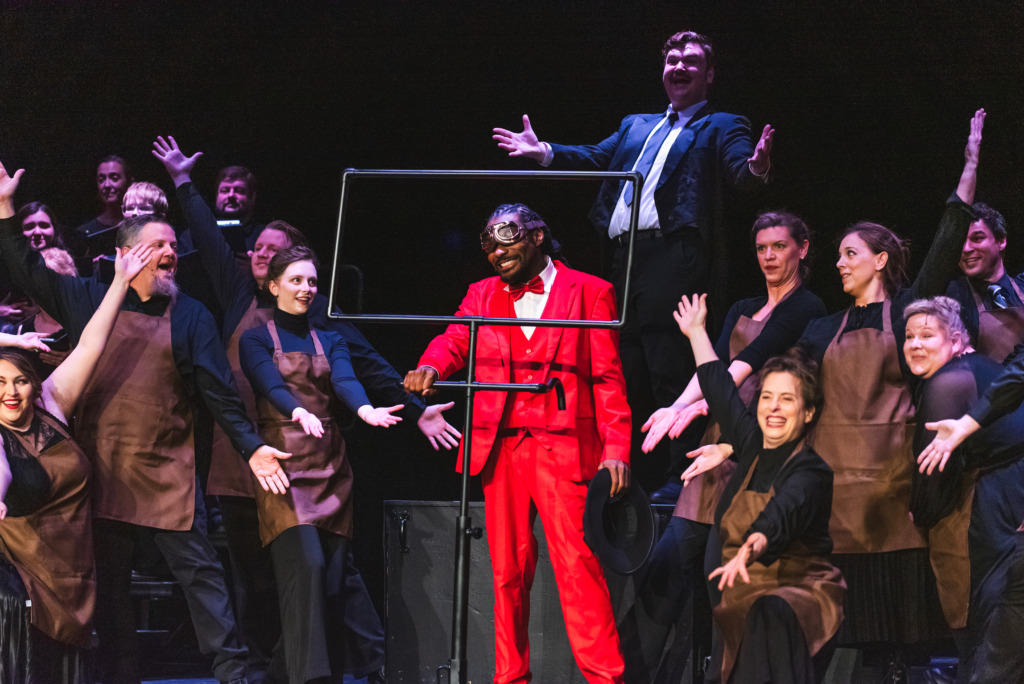
True to Haynes Rapnicki’s concert interpretation, set and projection designer Sebastian Sears conceives a functional set of a few moveable platforms and levels that aid the flow of the show. Also, he conceives some clever structural substitutes to suggest the pianos and the Model T that make the point without all the visual and technical fuss that would shove the show further into stage production territory than concert. His projections though, are a mixed bag. While intended to enhance the action and emotions on stage, as often as not they detract from them and pull the eye from the vocalists doing an outstanding job on their own. Perhaps if they weren’t placed so far to the sides of the stage where one has to forcibly shift focus, but in the end they add little to the work being done on stage and become somewhat repetitive at points.
Thomas Gardner and Atticus Cooper Boidy provide adequate lighting design for the concert. Good light for visibility but nothing flashy or overwhelming to detract from the story.
Malek and Weiss’ costume concept is simple but effective: the white folk in, well, white, the African-Americans in flashy red and black, and the immigrants in stark black (with a special blue metallic brocade for Houdini, the celebrity success of the group). It keeps the audience subconsciously focused on the racial dynamics and is most effective in the aforementioned visually-stunning opening title number.
Special praise must be given to Sandler for her double duty as Music Director (with assists from principal vocal coach Carly A. Baron and choirmaster David Zajic) who gets a sumptuous, full sound throughout for this lush, emotional score. Combined with Zajic’s duty as conductor of the superlative orchestra, the music is the star of this elaborate evening, much as it should be, and the team that produced it have exceeded all expectations. In a world where live music is disappearing at an alarming rate from local stages, it is a luxury to hear a single violin in the occasional score. Zajic employs not one but eight violins, in addition to four violas, five cellos, and a bass, plus a brass section that reads like Harold Hill singing “76 Trombones”.
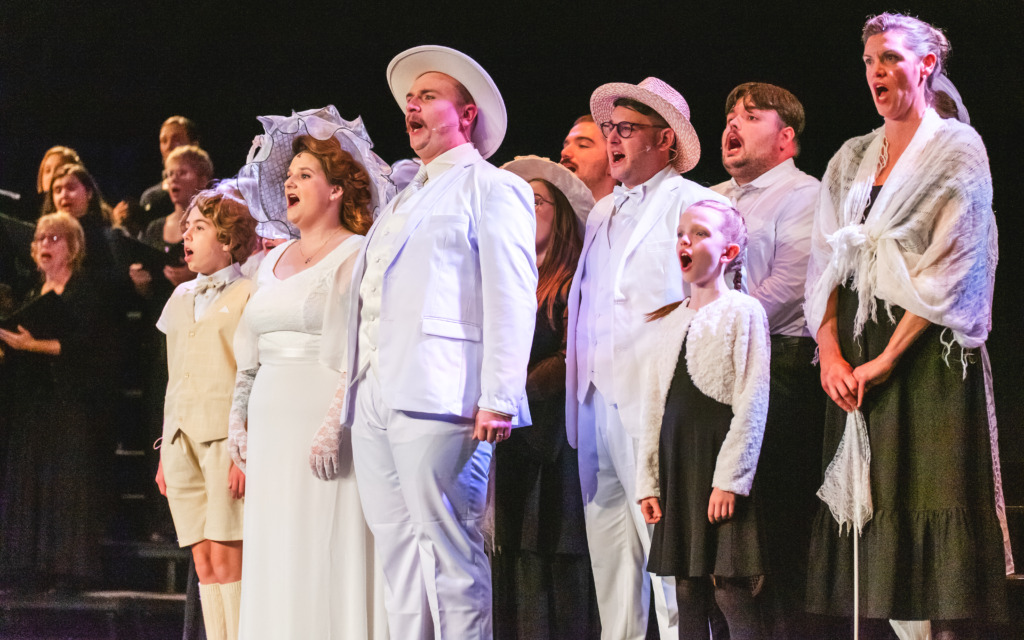
The program is a little sketchy on where the choreography credit should go. On the main title and the production team page, Sandler and Malek are listed as Choreographers. But further down there is also an entry for “Choreography” crediting Alyssa Bell, Timoth David Copney, and Tyler White. Unsure of who should get praised for what, it was all a seamless effort and the team each succeeded on whatever part they contributed.
If there is a weak point in this impressive evening of community theatre—and there is—it’s the bane of community theatres everywhere: a subpar community theatre sound system. At too many points mics came in late and cut in and out of solos, the worst case being when Malek’s mic failed him completely on the end of his Act 1 showcase number “Success”. Fortunately, Malek possesses a big enough voice and performance experience to compensate so we could at least hear him if we strained a little. But with the sheer number of participants involved, that grand sum came back to haunt Sound Designer William D’Eugenio. In several group numbers, with 70 back-up vocalists and 40 live orchestra instruments in between the stage and the audience, balance was a laboring chore, sometimes overpowering the lead vocalists. The saddest victim of the sound imbalance was Tai Alexander as Sarah’s Friend, an ensemble character who steps into the spotlight for one single incredible and heart-wrenching moment as Sarah’s Friend singing the powerful first act finale “Till We Reach That Day”. Alexander started off touching and strong, but as the number built and built to a cathartic crescendo, became inaudible, totally drowned out by the massive sound created around her. Her mouth was moving and she was visibly emoting, but not a note was heard. She deserved better. Rental spaces need to invest some of their grandiose fees to replace these weak sound systems with state-of-the-art acoustics that fit their individual spatial needs.
Amy Haynes Rapnicki had a daunting challenge before her in taking on this mammoth project, and she tackled it. Her scenes and transitions blend fluidly, her characters are well-developed and imperfect, and her story-telling skills on easy display. I give her special praise for presenting the libretto as written by McNally, maintaining the offensive racial slurs and use of the N-word to deliver the impact the piece was conceived for. Most local (and even the occasional regional or dinner theatre production) shy away from this for fear of offending a tender audience and soften the language. Yes, to hear it live onstage is shocking and uncomfortable, but sometimes we need to be jolted into uncomfortable territory to get the full emotional historical impact. It was a brave decision in today’s highly sensitive political climate, but if we’ve learned nothing in the last few years, it’s that we are not as culturally advanced as we would like to believe. When events Doctorow invented 50 years ago based on history 100 years ago are still being repeated today—white supremacy racists surfacing in alarming numbers, police brutality resulting in the death of an unarmed African-American they “thought” had a gun, violence and retaliation and the recent examples of anti-Semitism in our news even this week—the Willie Conklins (the racist fireman at the center of all the violence and wreckage in the story) of the world need to be exposed for what they are, not diluted and sugar-coated with “safer” euphemisms. I admire Haynes Rapnicki’s conviction and dedication to the message of her piece.
In Baltimore’s over-saturated theatrical scene today, attempting to do a big scale musical demanding 20-30 strong performers is a huge, risky gamble. With little companies on seemingly most street corners, the performer base is stretched thin. But as one of the many themes of this show says, one must dare to dream to succeed. MTC’s gamble paid off. Ragtime: In Concert hedged its bets for a win. Best wishes building into their sophomore season.
Running Time: approximately 2 hours and 30 minutes with one intermission
Ragtime a staged concert production of Maryland Theatre Collective, plays through November 5th 2023 on the main stage of Chesapeake Arts Center— 194 Hammonds Lane in Brooklyn Park, MD. Tickets are available at the door and in advance online.
